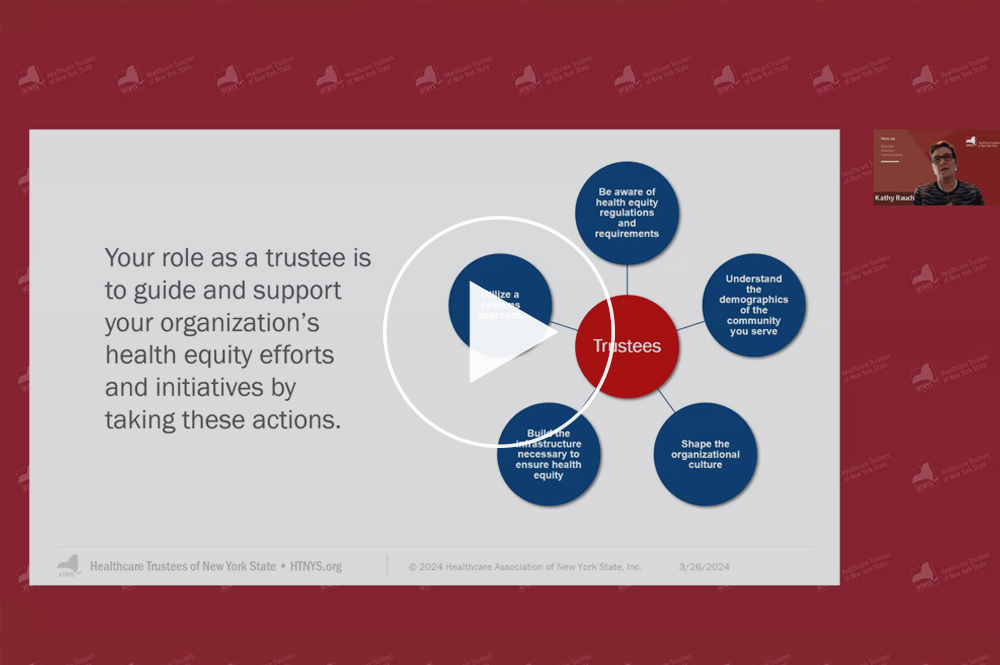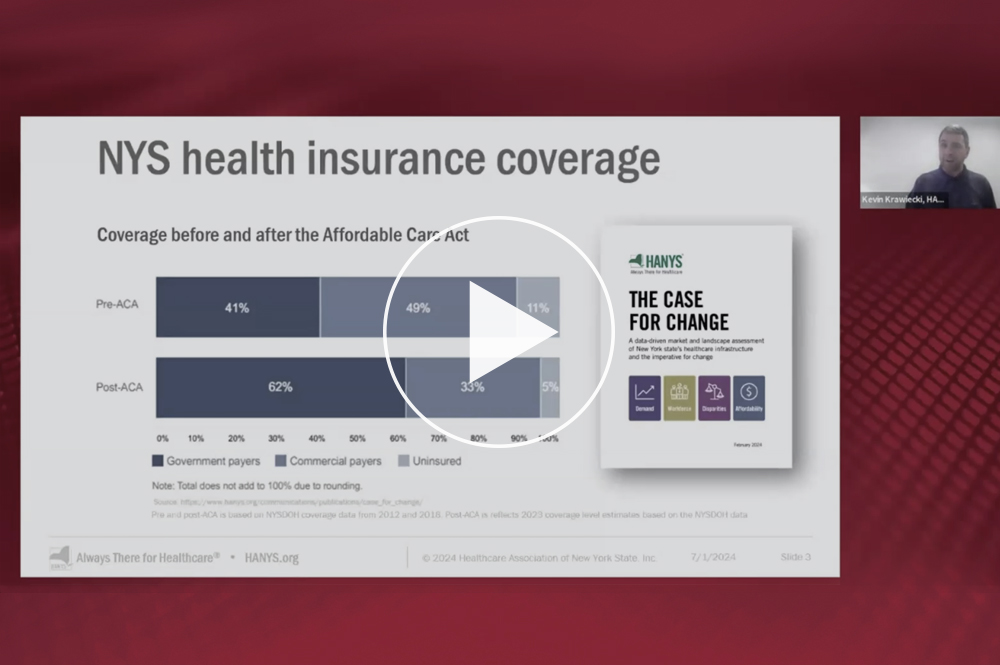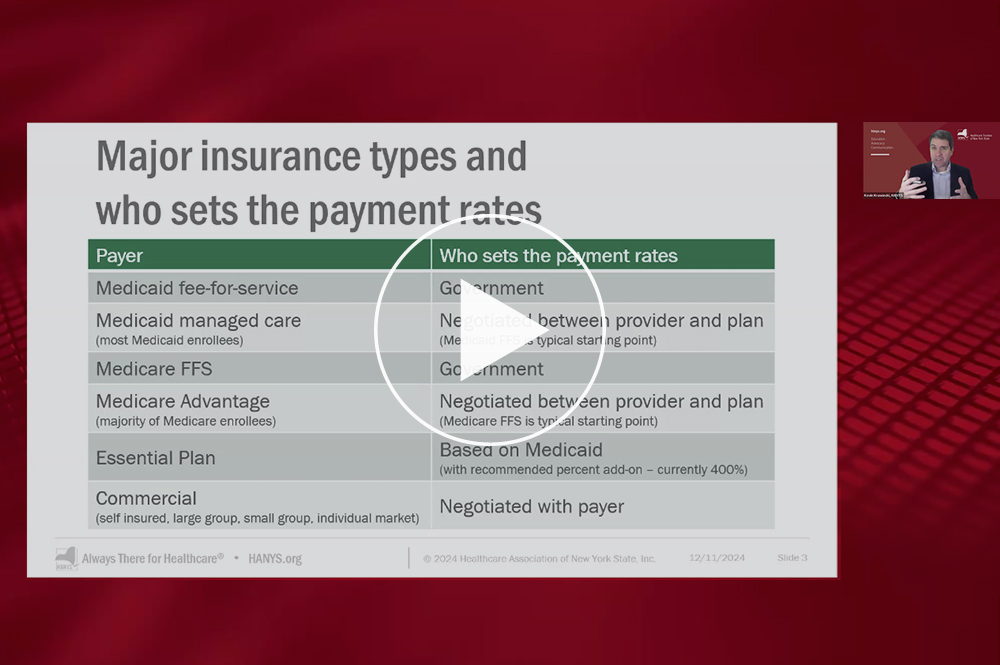How trustees can impact quality and patient safety
Evidence shows that organizations with engaged boards have better quality outcomes, yet many struggle with quality and safety oversight. Boards must have the resources and support to gain the knowledge needed to ensure the highest level of quality. This video reviews regulatory and accreditation requirements and how boards can effectively commit to and promote a culture of safety. Presented by Kathleen Rauch, RN, MSHQS, BSN, CPHQ, Vice President, Quality Advocacy, Research and Innovation, HANYS
What trustees need to know about health equity
Healthcare trustees play a critical role in community health and improving health equity — bringing their community perspective as they work closely with leadership to oversee health equity priorities.
This critical responsibility requires understanding the requirements and the methods for addressing the needs of the underserved. In addition to health equity as a strategic imperative, new regulatory and accreditation requirements could have financial, compliance and reputational impacts. This video reviews health equity requirements and standards hospitals face to help trustees better understand the mechanisms for addressing health equity in their community. Presented by Kathleen Rauch, RN, MSHQS, BSN, CPHQ, Vice President, Quality Advocacy, Research and Innovation, HANYS
Making sense of public hospital quality ratings
Too many measures, methodology variations and inconsistent results put an unfair burden on hospitals while doing little to help consumers. This video provides an overview of the most prominent hospital ratings including how they are developed, potential limitations and emerging trends. We’ll also share resources that trustees can use when evaluating report cards and talking points to help you respond in your community. Presented by Kathleen Rauch, RN, MSHQS, BSN, CPHQ, Vice President, Quality Advocacy, Research and Innovation, HANYS
Insurance coverage in New York state and why it matters
Hospitals and health systems are financed primarily through government reimbursement and commercial insurance coverage for healthcare services delivered. This 25-minute video, the first in a two-part series on health finance issues, explores:
- insurance coverage statistics in New York state;
- how providers can be paid differently depending on the coverage;
- how coverage funds the healthcare system, and
- underpayment trends from governmental payers.
Presented by Kevin Krawiecki, Vice President, Fiscal Policy, HANYS
How hospitals and nursing homes are reimbursed for care provided
The second video in our health finance series will provide a high-level view of hospital and nursing home reimbursement rates and how they are structured, including the difference between fee-for-service and managed care reimbursement, and how provider payment rates may vary based on factors related to the healthcare provider organization and the patient population served.
Presented by Kevin Krawiecki, Vice President, Fiscal Policy, HANYS
Cybersecurity and the role of the trustee
Healthcare trustees play an important role in establishing a culture of compliance, including cybersecurity. Recent DOH regulations require the board to play a leadership role in developing the cybersecurity strategy for their hospital or health system. In this video, you will hear why healthcare is a primary target of hackers and the stakes involved in cybersecurity mitigation efforts. You will also learn the basics of these New York state regulations, cybersecurity best practices and how boards can guide their cybersecurity program. Presented by Thomas Hallisey, Director, Digital Health Strategy, HANYS






